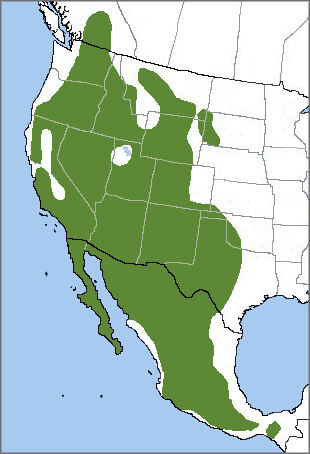 During an expedition to Mexico in the early 20th century, American ornithologist and explorer William Beebe was charmed by the song of the rock-clinging Canyon Wren, describing it as:
During an expedition to Mexico in the early 20th century, American ornithologist and explorer William Beebe was charmed by the song of the rock-clinging Canyon Wren, describing it as:
A silvery dropping song of eight or ten clear sweet notes, becoming more plaintive as they descend, and ending in several low, ascending trills. The silvery quality is of marvelous depth and purity…it seemed the very essence of the freshness of dawn in the cool bottom of the canyon.
Voices of the Canyon
Male Canyon Wrens songs are composed of clear, descending notes – almost sounding as if the bird is tumbling headfirst into a chasm. Chances are good that a Canyon Wren that's singing persistently and acting territorial is a male. The female sings much less frequently, usually in response to a male's song; her song is buzzy and ascending.
Many think this species' tumbling, echoing notes form one of the West's most beautiful bird songs. Both males and females sing, although their tunes sound a bit different.
Compare the two below! (The first clip is the male and the second is the female.)
(Audio of male Canyon Wren by Chris Parrish XC14176, accessible at www.xeno-canto.org/14176 ; Audio of female Canyon Wren by Andrew Spencer XC102256, accessible at www.xeno-canto.org/102256)
High-climbing Acrobat
The aptly named Canyon Wren is a bird of steep, rocky places, where it creeps along sheer rock walls like a mouse, disappearing from view into crevices, then popping back out for a quick look around. A glimpse reveals a reddish-brown bird spangled in tiny black-and-white spots, with contrasting white throat and long, decurved bill. Short legs and large feet tipped with sharp claws allow this agile songbird to climb up, down, and across sheer rock faces and cliffs.
Three Canyon Wren subspecies are recognized, separated by bill length, plumage color, and markings. This wren is nonmigratory throughout its range, although some birds make short seasonal movements, such as withdrawing from higher elevations during winter.
Life on the Rocks
The Canyon Wren has several adaptations that facilitate foraging in its rocky haunts. A long, slender bill and flattened head allow this bird to probe deeply into crevices in search of insect and spider prey, and short legs lower its center of gravity, allowing it to easily forage under rocks and in tight spaces.

Canyon Wren by Greg Lavaty
Although Canyon Wrens are often found near water, they are not known to drink it. Like other bird species of arid environments, such as the Black-throated Sparrow and Scaled Quail, the Canyon Wren gets all the moisture it needs from its insect prey.
A male Canyon Wren defines and defends his territory through song and continues to sing throughout the breeding season. Females sing in response to a male, often while the two birds forage together. Once mated, a pair may stay together through multiple nesting seasons. If not set upon by predators, bad weather, or other dangers, a pair may produce two broods per year.
Canyon Wrens usually nest in crevices, under ledges, or in rock piles, sometimes in and around human structures like stone walls or buildings. Both the male and female build the shallow, cup-shaped nest of twigs, mosses, and other vegetation.
Addressing Conservation Questions
Although still considered common throughout its wide range, the Canyon Wren is still a somewhat mysterious species, probably due in part to its hard-to-reach habitats. Questions remain about its breeding biology, population dynamics, and mortality rates. Recreational rock climbers may disturb or destroy Canyon Wren nests in some areas, and this may be particularly problematic in popular spots such as Devils Tower National Monument, Wyoming, and the Black Hills of South Dakota, which are home to small, isolated populations of the species.
ABC is currently working to assess the needs of other little-known species, particularly those that are close to extinction and currently live entirely or mostly outside of protected areas, such as the Gray-bellied Comet and São Paulo Marsh Antwren.
Donate to support ABC's conservation mission!



















































